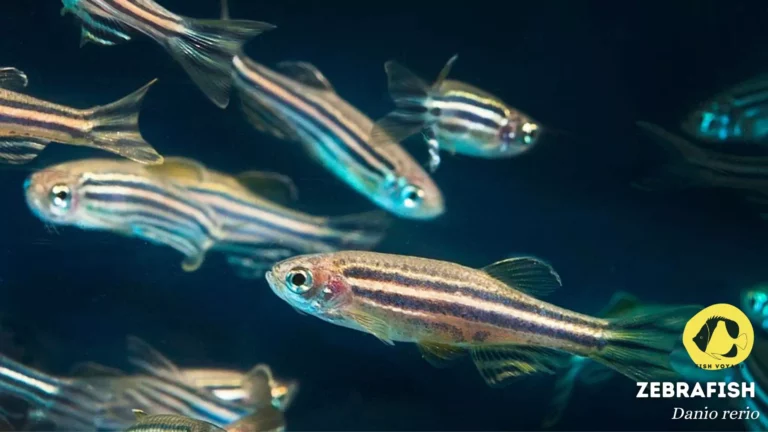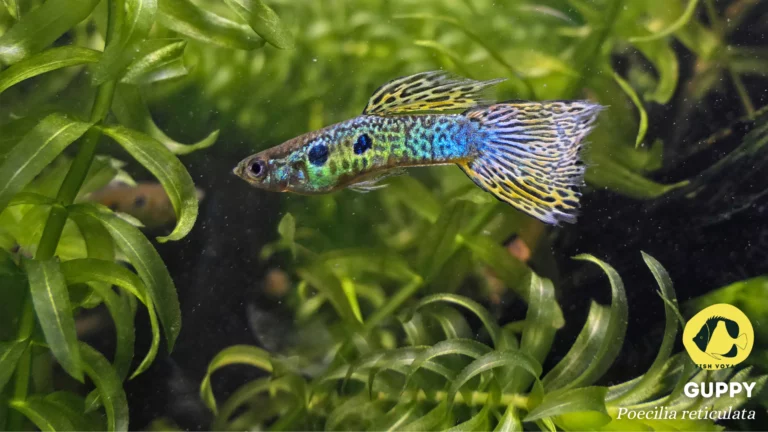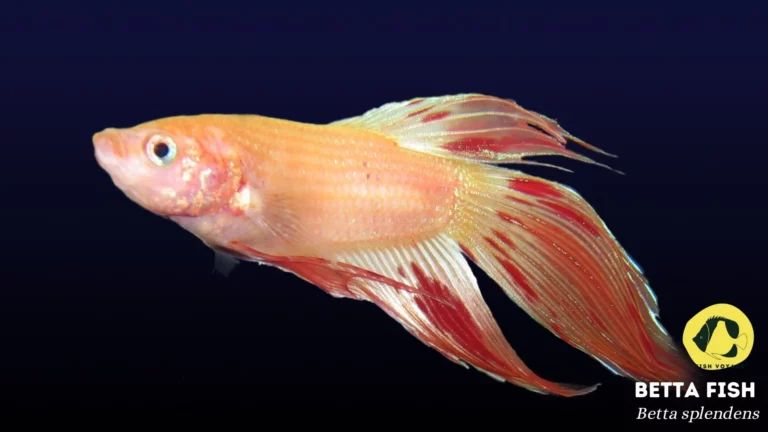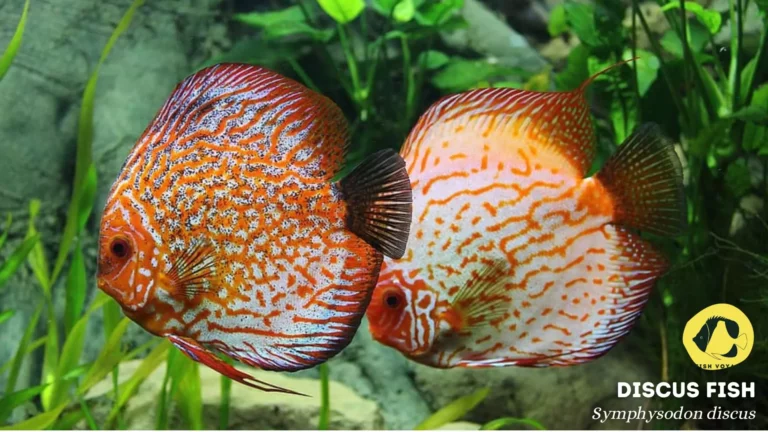Top 5 Hardy Fish For Small Tank

In recent years, the allure of small tanks has captivated aquarium enthusiasts, becoming a prominent trend in the ever-evolving world of aquatic hobbies. The compact nature of these tanks appeals to both novice and experienced hobbyists alike, offering an accessible entry point for those with limited space. However, the key to unlocking the true potential of these miniature aquatic ecosystems lies in the thoughtful selection of hardy fish. Choosing resilient species is paramount to ensuring the well-being of the underwater community and maintaining a thriving environment. In this comprehensive guide, we will explore the characteristics and care requirements of top hardy fish species, providing enthusiasts with valuable insights for cultivating a successful and visually stunning small tank setup. From guppies to bettas, each section will delve into the unique attributes of these resilient aquatic companions, empowering hobbyists to create a harmonious microcosm within the confines of a small tank.
Criteria for Selecting Hardy Fish
Water Parameter Compatibility
Selecting hardy fish for small tanks begins with meticulous attention to water parameters. Ensure that the chosen species aligns with the tank’s temperature range, maintaining a pH level within the recommended spectrum, and adapting well to water hardness variations. This not only promotes the health of the fish but also contributes to the overall stability of the aquatic environment.
Size and Activity Level
Consider the adult size of the fish in relation to the tank’s dimensions. Opt for species that comfortably fit within the confined space, avoiding overcrowding. Additionally, understanding the activity level of the fish is crucial. Choose species with energy levels that complement the tank size to prevent stress and territorial conflicts.
Compatibility with Other Tank Mates
Building a balanced community within a small tank hinges on selecting fish that coexist harmoniously. Research and choose species known for their compatibility with others, reducing the likelihood of aggressive behavior or territorial disputes. This careful consideration fosters a serene and cooperative aquatic environment.
Ease of Care and Adaptability
Opt for hardy fish that thrive with minimal intervention. This includes considering their dietary requirements, tolerance to fluctuations in water conditions, and overall adaptability to a captive environment. Choosing low-maintenance species ensures that even hobbyists with limited experience can successfully care for their aquatic companions, fostering a rewarding and sustainable hobby.
By adhering to these criteria, aquarists can navigate the nuanced process of selecting hardy fish for small tanks, creating an environment where the chosen species can flourish while contributing to the overall aesthetic appeal of the aquarium.
Top 5 Hardy Fish Species for Small Tanks
Guppy (Poecilia reticulata)
Characteristics
- Guppies exhibit hardiness in various water conditions, making them resilient for small tanks.
- High adaptability and prolific breeding contribute to their reputation as ideal beginner fish.
Tips for a Vibrant Guppy Community
- Maintain a balanced diet to enhance their vibrant colors and energy levels.
- Provide ample hiding spaces for fry, ensuring a thriving guppy community in a limited space.
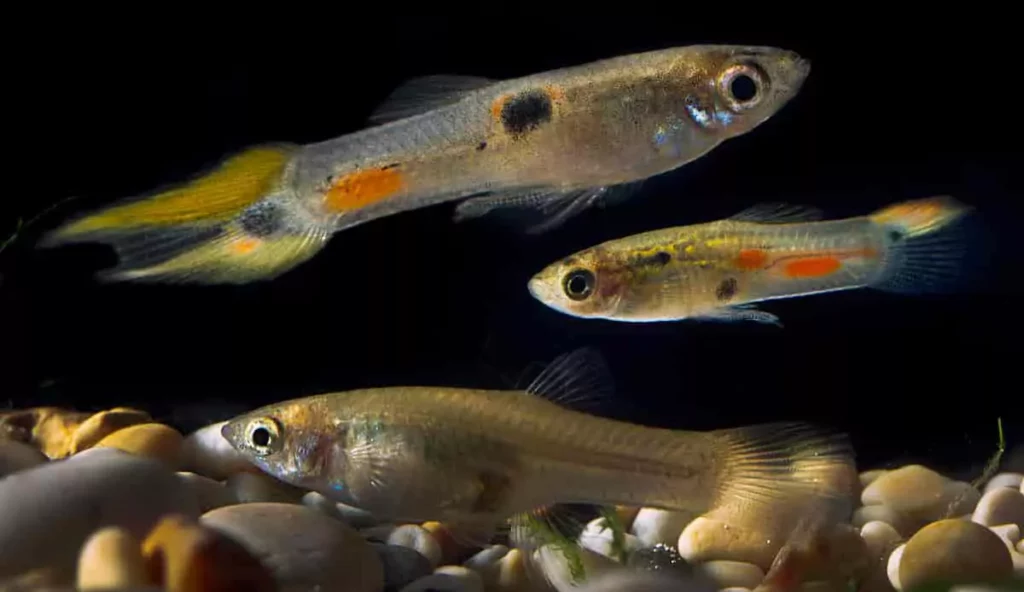
Zebra Danio (Danio rerio)
Active Nature
- Zebra danios showcase an energetic and playful demeanor, adding liveliness to the aquarium.
- Their constant swimming behavior creates an engaging aquatic display.
Suitable Tank Conditions and Maintenance Tips
- Thrive in well-filtered tanks with consistent water parameters.
- Regular water changes and substrate cleaning maintain an optimal environment for their active nature.
Community-Friendly Behavior
- Zebra danios exhibit a peaceful disposition, making them compatible with various non-aggressive tank mates.
- Schooling behavior enhances the visual appeal of a community aquarium.
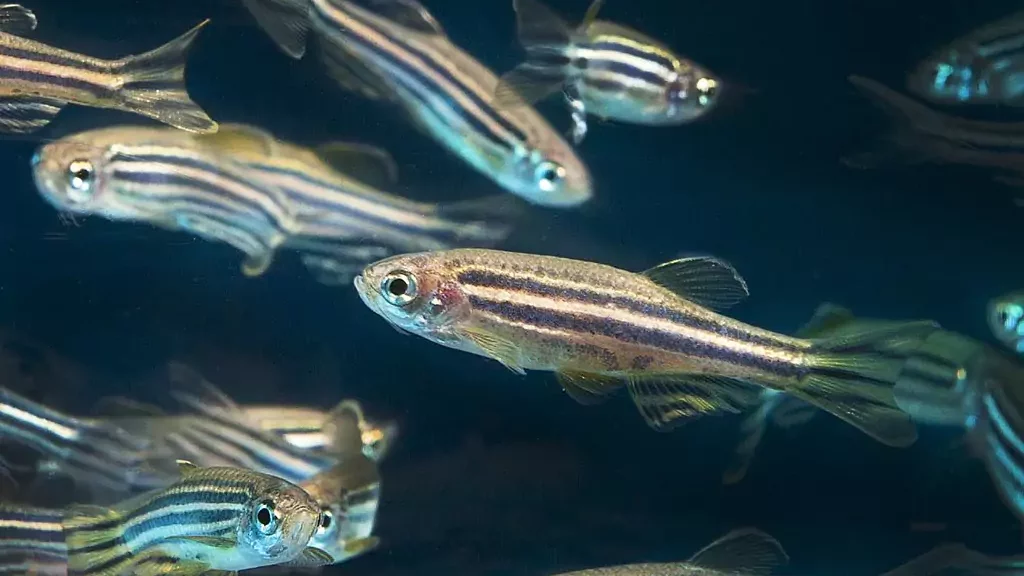
Platy (Xiphophorus maculatus)
Resilience and Adaptability
- Platies are hardy fish capable of thriving in diverse water conditions, making them well-suited for small tanks.
- Adaptability to fluctuations in temperature and pH enhances their overall resilience.
Varieties and Color Patterns
- Explore a spectrum of color patterns, including vibrant oranges and unique combinations.
- Varied platy varieties contribute to a visually appealing and diverse tank.
Ideal Tank Setup
- Provide hiding spots and live plants for exploration, promoting a stimulating environment.
- Balanced diet and consistent water quality contribute to the overall well-being of platies.
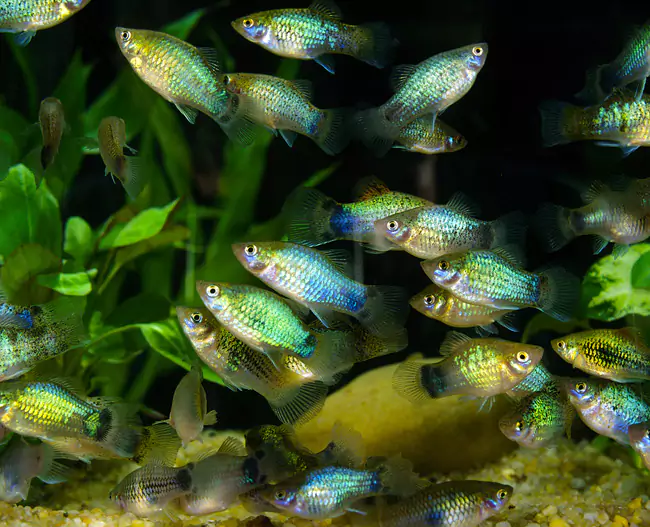
Betta Fish (Betta splendens)
Myth-Busting
- Dispel common myths about bettas, emphasizing their suitability for small tanks when given proper care.
- Address misconceptions regarding tank size requirements for bettas.
Tank Requirements and Proper Care
- Betta fish thrive in calm waters with minimal water movement, necessitating gentle filtration.
- Stress the importance of maintaining optimal water conditions and a balanced diet for their well-being.
Unique Features
- Showcase the vibrant colors and flowing fins of bettas, highlighting their unique aesthetic appeal.
- Discuss the individual personalities of bettas and their interactive nature with attentive owners.
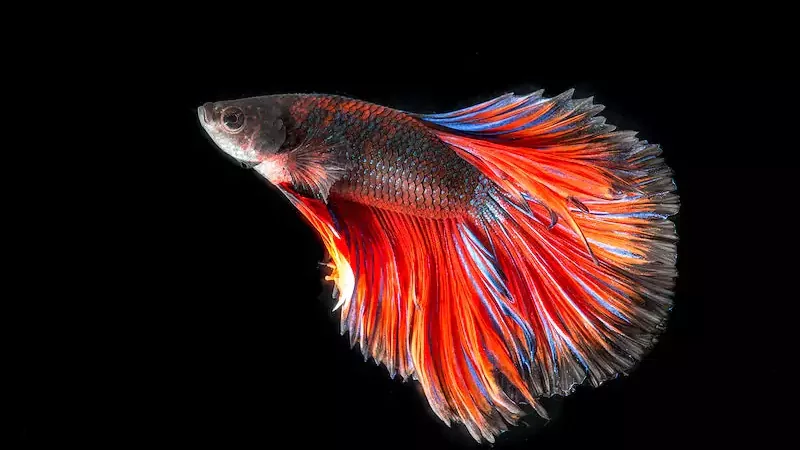
Corydoras Catfish (Corydoras spp.)
Bottom-Dwelling Habits and Benefits
- Corydoras catfish contribute to a clean tank by scavenging for food at the bottom.
- Their peaceful nature makes them compatible with a variety of tank mates.
Compatibility with Other Fish
- Explore the amicable behavior of Corydoras catfish, making them suitable companions for a community tank.
- Non-aggressive interactions contribute to a stress-free environment for other fish.
Tank Setup
- Provide substrate that is gentle on their barbels, ensuring a comfortable environment.
- Include hiding spots and suitable tank mates to create a well-rounded and harmonious aquarium community.

By understanding the unique characteristics and care requirements of these top hardy fish species, aquarists can make informed decisions, creating a thriving and visually appealing small tank ecosystem.
Tips for Maintaining a Small Tank Environment
Regular Water Testing and Changes
- Prioritize Water Quality: Consistently test water parameters, including pH, ammonia, nitrite, and nitrate levels, to safeguard the health of your aquatic community.
- Scheduled Water Changes: Implement routine water changes to remove debris and maintain stable water conditions, preventing stress and ensuring a thriving tank.
Appropriate Feeding Schedules and Portion Control
- Balanced Nutrition: Provide a well-rounded diet suitable for your fish species, promoting vibrant colors and overall health.
- Scheduled Feedings: Establish a consistent feeding schedule to avoid overfeeding. Portion control ensures your fish receive adequate nutrition without compromising water quality.
Monitoring Tank Parameters for Signs of Stress or Disease
- Visual Inspections: Regularly observe fish behavior for signs of stress, unusual swimming patterns, or changes in activity.
- Prompt Intervention: Act swiftly if abnormalities are detected. Quarantine affected fish, adjust tank conditions, and seek appropriate treatments to prevent the spread of disease.
- Behavioral Cues: Interpret changes in fish behavior as indicators of their well-being. Proactive monitoring aids in early detection and intervention.
By incorporating these tips into your small tank maintenance routine, you not only ensure the health and happiness of your aquatic companions but also create a vibrant and sustainable environment for your underwater community.
Common Mistakes to Avoid
Overstocking the Tank
- Balancing Livelihood: Resist the temptation to overcrowd your small tank. Overstocking leads to increased waste production and disrupts the delicate balance of the ecosystem.
- Guidelines Matter: Adhere to recommended stocking guidelines based on the tank’s size and individual fish needs to prevent stress, territorial conflicts, and compromised water quality.
- Impact on Fish Health: Recognize that overstocking jeopardizes fish health, hindering their ability to thrive and increasing susceptibility to diseases.
Neglecting Water Quality
- Routine Water Maintenance: Regularly test and maintain water quality to ensure a stable and healthy environment for your fish.
- Consequences of Neglect: Neglecting water quality can result in harmful ammonia spikes, elevated stress levels, and increased vulnerability to diseases.
- Educational Resources: Familiarize yourself with proper water maintenance practices to mitigate risks and sustain a thriving aquatic community.
Lack of Research on Fish Compatibility
- Species Interaction: Thoroughly research the compatibility of fish species before introducing them to your tank to prevent conflicts.
- Territorial Disputes: Incompatible species may engage in territorial disputes, leading to stress and aggression.
- Comprehensive Planning: Plan your aquarium community carefully, considering the temperament, size, and habitat preferences of each species to create a cohesive and harmonious environment.
By steering clear of these common pitfalls, you set the stage for a successful small tank experience, fostering a healthy and balanced aquatic ecosystem for your cherished aquatic companions.
Conclusion
In conclusion, the meticulous selection of hardy fish stands as the cornerstone for cultivating a flourishing aquatic microcosm within the confines of small tanks. As this guide has underscored, prioritizing resilience, adaptability, and compatibility ensures not only the well-being of the aquatic inhabitants but also the overall success of the aquarium hobby. The robust characteristics of chosen species contribute to a visually stunning and sustainable underwater world, providing enthusiasts with a fulfilling and rewarding experience.
We encourage readers to actively engage in the discourse surrounding their own experiences with hardy fish in small tanks. Your insights and anecdotes are valuable contributions to the collective knowledge of the aquarium community. By sharing your trials, successes, and favorite hardy fish species, you not only enrich the hobby for fellow enthusiasts but also inspire others to embark on their own journey of creating vibrant and thriving small tank ecosystems. Together, let us continue to explore, learn, and celebrate the wonders of the aquatic world in our shared passion for responsible and enjoyable aquarium keeping.
Additional Resources
For further in-depth exploration and ongoing support in your small tank venture, we recommend tapping into reputable aquarium forums where a community of seasoned hobbyists shares valuable insights and experiences. Engaging in these forums not only broadens your knowledge but also connects you with a network of enthusiasts who are passionate about cultivating thriving aquatic environments.
Reputable Forums
- ThePlantedTank: Explore a wealth of information on planted tanks, aquascaping, and maintaining optimal conditions for both flora and fauna.
- Fishlore: Join the Fishlore community to access expert advice, troubleshooting tips, and engage in conversations about various aquarium setups.
Recommended Products
- API Freshwater Master Test Kit: Ensure accurate and reliable water parameter testing with the API Freshwater Master Test Kit, a staple for every conscientious aquarist.
- Aquaneat Sponge Filters: Enhance biological filtration in your small tank with sponge filters, providing a gentle and effective way to keep the water clean and clear.
- Cobalt Aquatics Aquarium Heater: Maintain a consistent and suitable temperature for your fish with a reliable aquarium heater equipped with a thermostat.
- Seachem Prime Water Conditioner: Safeguard your fish against harmful substances and conditions by using Seachem Prime, a highly effective water conditioner.
Remember, the success of your small tank relies on the right information and quality equipment. Explore these resources and products to elevate your aquarium-keeping journey, ensuring a rewarding experience for both you and your aquatic companions.
Frequently Asked Questions (FAQs)
1. What are the best hardy fish species for small tanks?
Guppies, Zebra Danios, Platies, Betta Fish, and Corydoras Catfish are among the top hardy fish species suitable for small tanks. Their resilience and adaptability make them ideal choices for enthusiasts seeking vibrant aquatic communities in limited spaces.
2. How often should I test the water parameters in my small tank?
Regular water testing is crucial for maintaining a healthy environment. Test the water parameters, including pH, ammonia, nitrite, and nitrate levels, at least once a week. Swift responses to any fluctuations help prevent stress and promote the well-being of your fish.
3. Can I keep multiple hardy fish species together in a small tank?
Yes, with careful consideration of compatibility and size, you can create a harmonious community in a small tank. Research the temperament and space requirements of each species to prevent overstocking and territorial conflicts.
4. How do I prevent overfeeding in a small tank?
Overfeeding can lead to water quality issues. Establish a consistent feeding schedule and provide only the amount of food that the fish can consume in a few minutes. Monitor their behavior and adjust portions accordingly to maintain optimal conditions.
5. What is the ideal temperature range for small tank hardy fish?
The ideal temperature varies slightly among species, but generally, maintaining a range between 75°F to 80°F (24°C to 27°C) accommodates the preferences of popular hardy fish like guppies, Zebra Danios, Platies, Betta Fish, and Corydoras Catfish. Use a reliable heater to ensure a stable temperature.

